High-density polyethylene (HDPE) dredging pipes are indispensable in dredging and sediment transport because of their toughness, flexibility, and resistance to wear and corrosion. As industries seek efficient and sustainable solutions to material handling, understanding the characteristics, benefits, and uses of HDPE dredging pipes becomes vital. Through this guide, we aim to give our readers a complete understanding of HDPE dredging pipes through discussions on their manufacturing processes, installation techniques, and other unique advantages over traditional materials. Your exhaustive article equips you with all relevant information regarding HDPE dredging pipes, whether you are a contractor, an engineer, or just curious about the technology.
What is an HDPE Dredge Pipe, and What Are Its Applications?
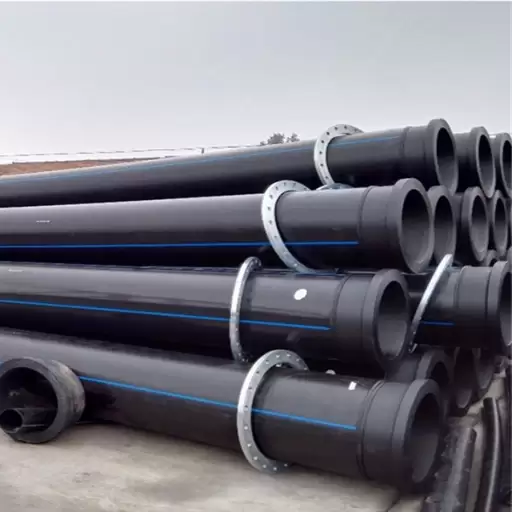
Image source: https://www.tengyuanpipes.com/
HDPE dredge pipes are specially designed piping systems made from high-density polyethylene that transport dredged material such as sand, silt and water. They have lightweight but sturdy construction, which makes them easy to handle and install. These pipes are highly resistant to abrasion and chemical attack, thus making them suitable for various applications, including marine environments where they can be used in marine pipeline projects and land reclamation schemes, among others, which require the management of sediments. Their flexibility also enables them to adapt to different terrains; hence, they are preferred by contractors who want to improve efficiency while reducing maintenance costs for their dredging projects.
Understanding HDPE and Its Properties
High-density polyethylene (HDPE) is a versatile thermoplastic with a high strength-to-density ratio. This material has excellent chemical resistance, making it applicable to different environments and applications, explicitly dredging and pipeline systems. It’s known for durability and can withstand harsh weather conditions to ensure outdoor use. Additionally, it is lightweight, enables ease of installation, and reduces transportation costs. The flexibility of the HDPE allows it to bend without breaking, thus accommodating soil and sediment movements during dredging operations. Its low coefficient of friction also helps materials flow easily, enhancing overall operational efficiency. Furthermore, HDPE is an environmentally friendly compound since its recycling leads to sustainable practices within industrial contexts.
Common Uses of HDPE Dredging Pipe
Some primary uses of HDPE dredging pipes include:
- Marine Dredging Operations: These are mainly employed for transporting sediments and water while dredging activities in rivers, lakes, or harbors where different water conditions and sediment loads vary.
- Land Reclamation Projects: They play a key role as far as land reclamation is concerned by helping in efficiently moving materials from underwater onto which land can be built up or created.
- Sediment Control: Often used in managing sediment runoff, these pipes help control the flow of sediments through various surroundings, minimizing erosion effectively and maintaining water quality.
HDPE dredging pipes are strong enough for these applications to execute their tasks effectively, leading to increased performance and efficiency.
Pipeline Systems in Dredging Projects
Pipeline systems are critical in dredging projects as they efficiently transport materials such as sediment and water. These systems usually have a network of HDPE pipes linking dredging equipment to discharge points. Proper design and layout are paramount in maintaining optimum flow rates, cutting operational costs, and enhancing project sustainability. Modern monitoring and control technologies are often incorporated into these pipeline systems to allow for real-time data collection and manage flow conditions. Besides that, selecting materials like HDPE ensures its resistance to wear, flexibility under challenging environments, and compatibility with different types of sediments – all of which contribute to improved productivity during dredging operations by reducing downtime.
What Are the Advantages of HDPE in Dredging?
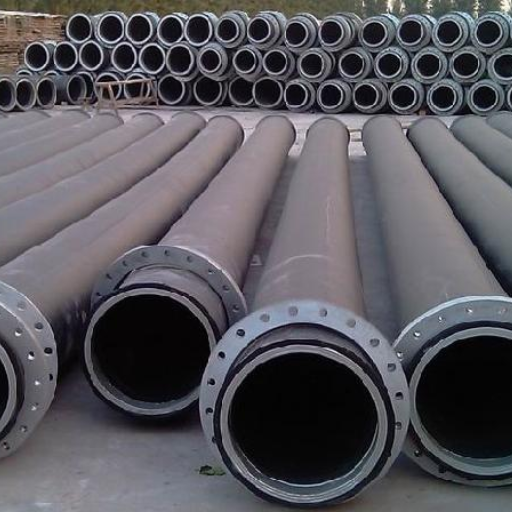
HDPE (High-Density Polyethylene) has numerous advantages when used in dredging. To begin with, it is highly durable and resistant to corrosive elements; hence, its lifespan is quite long, even when exposed to severe marine conditions. Secondly, HDPE is lightweight and flexible, which makes it easily handled or moved, thus reducing labor and transportation costs significantly. Additionally, this chemical resistance enables HDPE pipes to handle a wide range of sediments effectively without any degradation involved. The smooth internal surface finish reduces friction losses within HDPE pipes, leading to effective flow rates and minimizing energy consumption. Lastly, the ability of HDPE material to tolerate extreme temperatures and UV exposure only elevates its dependability and efficiency under various dredging scenarios.
High Corrosion Resistance
Dredging operations in harsh marine conditions require HDPE (High-Density Polyethylene) pipes with excellent corrosion resistance. Unlike other traditional materials like steel, HDPE does not rust or corrode when it comes into contact with seawater, chemicals, or various sediments. In this regard, the pipe’s lifespan is extended, and the need for frequent replacements or repairs is minimized significantly. Also, HDPE can tolerate several corrosive elements, making other substances unreliable in situations where chemical reactions may occur. Therefore, HDPE is non-corrosive, thus ensuring efficient operation and minimizing the environmental effects of maintaining or replacing eroded infrastructure.
Durability in Dredging Projects
Durability is imperative to successful dredging projects, and HDPE pipes meet this criterion. The inherent properties of the materials that make up these types of pipes confer a degree of resistance to attrition, making them withstand the abrasive action of sediments and endure severe underwater conditions. This strength allows for long-term effectiveness even under heavy loads by preventing failures from happening during installation and service life. This is because of enhanced tensile strength and flexibility properties compared to other competing products in the marketplace. On top of that, they are impact resistant with a lifetime upwards of fifty years on correct maintenance while lowering repair frequencies; it also reduces productivity losses in dredging through less downtime and connected costs. These extreme fluctuations, therefore, do not affect its structural stability, hence increased longevity within harsh dredging environments.
Cost-Effectiveness and Longevity
HDPE pipes are known for their cost effectiveness and impressive long life when considering the financial aspects of dredging projects. Thus, while initial HDPE costs can be higher than those of traditional materials, the long-term savings are enormous. Besides, HDPE’s toughness reduces maintenance and repair expenses over time, thus lowering the total cost of ownership (TCO). In addition, its longer shelf life beyond 50 years ensures that investments into HDPE infrastructure do not have to be replaced frequently, preventing unexpected expenses. Furthermore, this permits cost reductions in labor outlays and project duration because it is easier to handle or install due to its lightness.
How Are HDPE Dredge Pipes Manufactured and Installed?
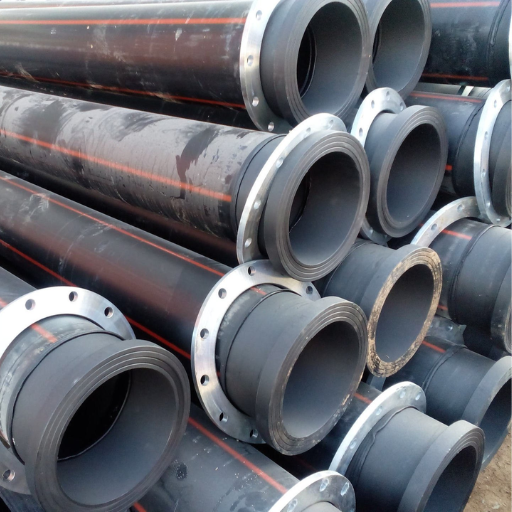
HDPE dredge pipes are made by using high-density polyethylene resin that has been extruded through an elaborate process. Creating pipe shapes requires first melts of resins, which later pass through dies under pressure. They are then cooled off and subjected to cut-and-trim operations, after which they are checked for quality for properties such as pressure resistance and durability. The installation methods generally involve trenching for underground applications or floating techniques for surface usage, whereby pipe sections are welded together by heat fusion or mechanical fittings with no leaks being allowed at all joints. During installation, proper alignment and support are essential to maintain the integrity of pipes, particularly under harsh conditions commonly encountered in dredging activities like placing them straight into a channel on a lake bed.
Manufacturing Process of HDPE Pipe
Manufacturing HDPE (High-Density Polyethylene) pipe begins with selecting high-quality polyethylene resin that guarantees desired performance characteristics. This substance undergoes an extrusion process, melting by applying heat and then squeezing through a die intricately designed to shape the pipe. The next stage after extrusion is cooling and cutting the pipes into specified lengths. To ensure that these tubes are in line with industry standards, quality control measures such as pressure testing and durability checks are employed. Furthermore, more advanced methods, such as co-extrusion, can fabricate multilayered pipes with improved properties. The final activities include packing and readying them for shipping to the installation site so that they are ready for use once they reach there. This efficient and controlled manufacturing process demonstrates the dependability and durability of HDPE pipes across multiple applications.
Installation Procedures
Some key processes must be carried out to have effective HDPE installations. First, appropriate ground preparation has to be made, which encompasses clearing the area where the installation will occur from obstructions and shallow excavations if necessary. Precise alignment of individual elements is another important procedure used to avoid stresses on poorly fitted assembled joints that can cause leakages.
Heat fusion, whereby ends of pipes are heated before joining them together to have strong connections with zero seams, is one standard method used when joining these pipes together.eSmith Mechanical fittings are also helpful, especially during installation at tight points. While installing, it’s essential that an equal spacing between different sections should occur at regular intervals to stop them from falling or moving about. ix Finally, a comprehensive examination should be done after completion so that proper alignment is checked together with secure connections, thus guaranteeing operation- readiness.
Utilizing Flanges and Fittings
In installing HDPE pipes, flanges, and fittings, it is essential to ensure that the connections are secure and efficient in various applications. To join two pipe sections, flanges enable a flat surface to be formed where they can be bolted together to make leakproof solid seals. The right flange, like a raised or flat face, should be chosen depending on the system pressure and temperature requirements. Different types of fittings, such as elbows, tees, couplings, etc, allow for changes in direction or branching of the piping system, hence accommodating different installation configurations. To maintain system integrity and avoid failures when using flanges and fittings, adherence to manufacturers’ recommendations concerning torque specifications and installation technique is important. Regular inspection and maintenance of these joints are also recommended to ensure long-term performance and reliability.
What Types of Fittings and Flanges Are Used with HDPE Dredge Pipes?
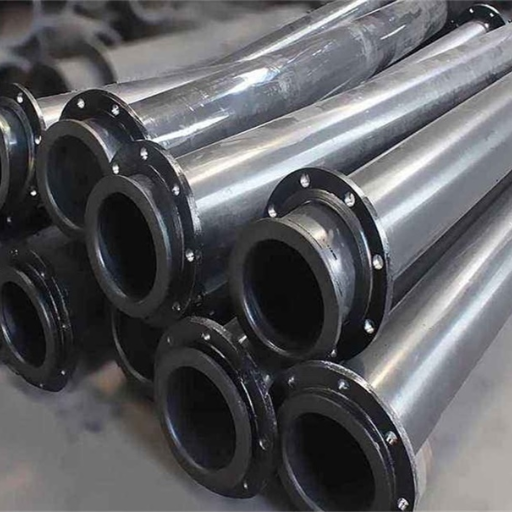
To guarantee effectiveness, employ several types of fittings and flanges while working with HDPE dredge pipes. A socket fitting is most commonly used because it can easily be connected through heat fusion or electrofusion, which allows for the secure joining of pipes. Moreover, butt-fused connections are standard; hence, flow properties are improved as there are no disruptions between connected pieces. In dredging applications, slip-on flanges blind weld necks are crucial components that ideally create durable leak-proof joints. Depending on environmental conditions, specific pressure ratings, and the intended application of the dredge pipeline, users will select different kinds of fittings, including flanges.
Various Flanges and Their Applications
Different kinds of flanges are available to suit specific applications in pipe work. Slip-on flanges commonly slide over the pipe; hence, they are easy to install and align. Weld neck flanges have a long neck which supports the pipe and provides a smooth flow transition, thus they are commonly used in high pressure applications since they can withstand high stresses. They may be used as seals at the end of pipes, valves, or pressure vessel openings and for maintenance or system modifications where future access might be needed. Furthermore, lap joint flanges can rotate around easily during installation, besides other industrial settings where they are often required to line with pipes or pivot. Understanding the nature of the application and environmental conditions is essential when selecting the appropriate type of flange to ensure the systems’ safety and effective functioning.
Choosing the Right Fittings
When selecting the right dredging fittings for your dredging application, it is essential to consider factors such as material compatibility, pressure ratings, and environment-specific conditions. Quality materials like PVC, HDPE, or metal alloys should be selected according to their resistance against corrosion and impact effects. In addition, knowing the pressure requirements of a system aids in determining the ideal fitting types, like weld neck flanges for high-stress situations or strong butt fusion fittings. In addition, you may wish to check out product specifications from reputable manufacturers while considering industry standards, ensuring that all components will function together seamlessly, resulting in efficient and safe pipeline systems.
What Are the Key Considerations for Choosing HDPE Dredging Pipe?
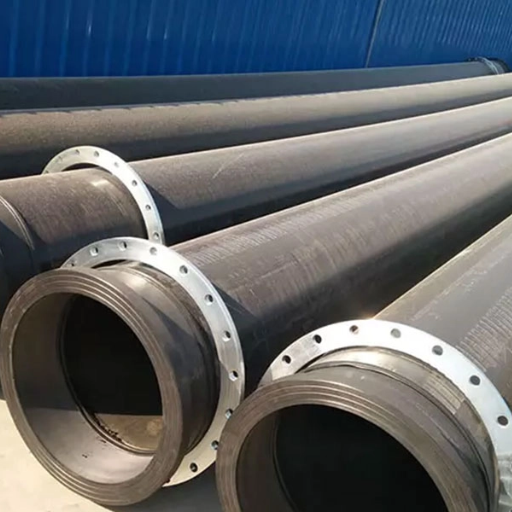
Several factors should be carefully considered when selecting an HDPE dredging pipe. First, you need to evaluate the pipe diameter and thickness of the wall because they affect flow efficiency and structural integrity during dredging procedures. In addition, it is essential to assess the pipe’s pressure rating to ensure that it meets or exceeds the operational pressures expected in a dredging environment. Furthermore, one should consider how smooth the inner surface of a pipe is because it affects flow characteristics and wear resistance. Besides, one needs to factor in the chemical resistance of the pipes against probable contaminants found in their dredged materials. Lastly, check whether an HDPE pipe conforms with industry standards and certifications as this can significantly influence its performance and lifespan under harsh conditions.
Assessing Durability and Chemical Resistance
In assessing durability and chemical resistance for HDPE dredging pipes, it’s essential to consider the characteristics of the material itself as well as the environmental factors under study. High-density polyethylene (HDPE) is known for its high resistance to various chemicals, including acids, bases, solvents, etc., making it an excellent material choice for dredging where different contaminations are likely to occur. In addition, other attributes like UV stability and temperature tolerance play a significant role in determining how long HDPE lasts, especially when used externally. As such, when sourcing HDPE pipes, go for products certified by critical players within the industry; this will guarantee you reliability as well as safety aspects stipulated while ensuring their durability status on specific products intended at meeting your demands/needs accordingly have been fully met Hence also reviewing third-party test results from reputable sources can provide insights into how these pipes perform under different operating conditions so that one makes informed decisions on whether they are suitable for their dredging projects.
Selecting Suppliers and Manufacturers
It is essential to conduct comprehensive research to establish reliable partnerships when choosing suppliers and manufacturers of HDPE dredging pipes. You can begin by assessing the background of potential suppliers, as indicated by their customer ratings and industry reviews. ThomasNet, Alibaba, Global Sources, and others can also help you find quality-assured suppliers and compare what they have. Look for those who have technical descriptions for each product, such as specific materials used and certification, so that it would be possible to meet industry standards established by organizations like ASTM International.
Evaluating Costs and Efficiency in Dredging Projects
Also, you would want to get case studies or references from previous customers to see how they fared. Furthermore, talking directly with the producers about your distinct prerequisites will help them understand better and hence enable developing custom-made proposals. This ensures the progressive completion of dredging projects.
When assessing overall costs and productivity related to dredging operations, it is essential not to ignore several factors that could determine these aspects simultaneously. The first step is determining the size of the job, the sediment volume one should plan on digging out, and the distance transportation goes. In other words, budgeting must cover all operational expenses related to personnel and equipment and consider unforeseen ones, including environmental compliance procedures and site preparation for the US Army Corps of Engineers.
Adopting up-to-date technologies can improve efficiency and achieve considerable savings. Recent developments mentioned in resources like MarineLink suggest using GPS with sonar for accurate dredging to avoid over excavations, thereby decreasing time spent on site. Also, servicing needs or general maintenance requirements should be considered because well-maintained equipment performs better, reducing downtime and fewer repair charges.
Lastly, the holistic cost analysis must encompass the life cycle costs of materials like HDPE pipes that provide longevity. This aspect is often presented extensively under quality verification information from vendors implying long-term savings associated with replacement or fixing works. This way, project administrators can consider this information carefully with respect to the cost-benefit ratio for effective dredging interventions.
How Does HDPE Dredging Pipe Compare to Other Types of Dredging Pipes?
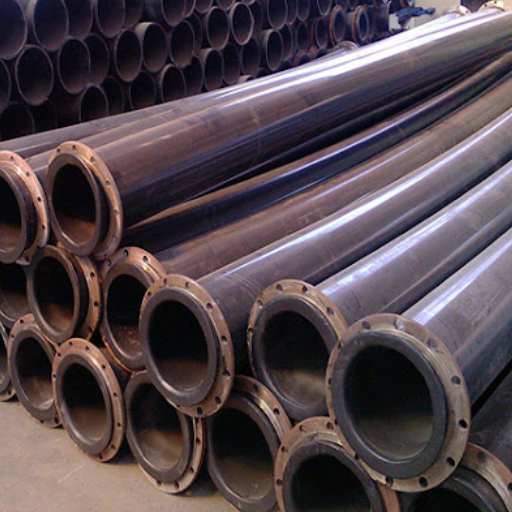
Compared to traditional materials such as PVC or steel, HDPE (High-Density Polyethylene) dredging pipes are renowned for being more robust, adaptable, and corrosion-resistant. A notable merit of HDPE pipes is their lightweight, which allows easy installation and maintenance and reduces labor costs. Moreover, the inner surface of these pipes is smooth, which means there will be no sediment clogging, eventually leading to better flow rates and higher productivity.
Conversely, while they last long, steel tubes corrode easily and hence require constant maintenance or coatings to protect them, making them expensive in the long run. Conversely, this flexibility makes PVC less suitable as it can crack under certain conditions. In general terms, however, HDPE remains an inexpensive alternative with durability and lower operating costs, thus becoming increasingly popular in dredging applications.
Comparing HDPE with Steel Pipe
Several crucial factors come into play when comparing HDPE and steel pipes. Firstly, HDPE pipes are highly resistant to corrosion and chemicals and hence require minimal upkeep, unlike steel pipes, which may need regular rustproofing through coatings. Secondly, HDPE’s pliability insulates it from soil shifting and pressure fluctuations without causing cracks in its structure, contrary to rigid metal pipes.
Also, due to its lightweight nature, HDPE eases the installation process since it does not involve complex procedures, thus reducing initial project costs compared with steel pipes.
Again, regarding service life, HDPE pipes usually last longer than 50 years, while the commonly maintained metallic kinds persist for only 20-30 years. Consequently, the total cost of ownership, including installation, maintenance, and replacement, often favors HDPE as a more economical option for dredging applications.
Understanding the Benefits of High-Density Polyethylene Material
There are several advantages associated with high-density polyethylene (HDPE) in several different applications, such as construction and environmental management. Among the most important ones is its ability to withstand any type of environmental stressor, like chemicals, moisture, or extreme temperatures, which makes it last longer even in tough conditions. Besides, HDPE material is not heavy but strong enough to ease installation and reduce transportation expenses.
HDPE has a unique recyclability feature that enables environmental conservation through reduced waste and promotes a circular economy. The fact that it does not allow water or fluid to pass through makes it an excellent choice for containing water or transporting fluids without leakage and contamination. In total, HDPE’s combination of toughness, affordability, and eco-friendliness has made it a favorite in many sectors.
The Role of Polyurethane in Enhancing Durability
Polyurethane is vital in enhancing the durability of various materials and structures since it has remarkable mechanical properties and is versatile. This serves as a safeguarding coat due to its resistance against friction, chemical reactions, and weather elements, thereby making it ideal for use on floors and in other places like motor vehicles and industries. Moreover, polyurethane foams possess lightweight strength, which means they save energy by being insulators, hence increasing life expectancy for items under their care. It performs this role by forming a resilient barrier against moisture and wear, thus significantly reducing maintenance requirements and decreasing chances of material failure, strengthening its status as an essential constituent in long-lasting building projects and manufacturing activities.
Reference sources
-
Plastic Pipe Institute (PPI): This source provides extensive insights into HDPE pipes used in various applications, including dredging. It covers aspects such as durability, flexibility, and resistance to abrasion and corrosion. Read more
-
Tengyuan: This source offers detailed information on the advantages and applications of HDPE dredging pipes, emphasizing their high strength, lightweight nature, and resistance to various environmental conditions. Read more
-
Puhui Industry Co., Ltd.: This source provides a comprehensive overview of HDPE dredging pipes, including technical specifications, performance characteristics, and benefits in dredging projects. Read more
Related Articles:Essential Attributes of High-Density Polyethylene (HDPE) Dredging Pipes





